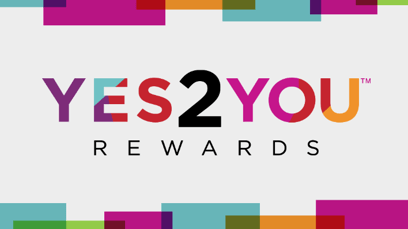Bond
Retailers: Why Millennials Might Be Ignoring You & How To Win Their Brand Loyalty
If played right, you too can earn #millennialoyalty.

A recent study reported by Forbes affirmed that contrary to what many brands and marketers believe, Millennials can be brand loyal. They are no longer the noncommittal bachelors and bachelorettes of the demographic cohorts – they are capable of brand love. The study reports that 60% of Millennials are often or always loyal to brands that they currently purchase.
Realistically, Millennials have been capable of brand love the whole time. But with so many marketing messages in their faces – they have simply tuned out. And why wouldn’t they? With so many brands vying for their hearts, Millennials will wait for the ones that try harder – the ones that understand and engage them on a personal level. And at 80 million strong with an estimated $200 billion in annual buying power (in the US alone), they can.
Mass Media Miss
This coincides perfectly with the study’s first finding – Millennials are not influenced at all by advertising. Only 1% of Millennials surveyed said that a compelling advertisement would make them trust a brand more (never mind the “un-compelling”). So, what’s the problem with ads exactly? Advertising is in its very nature impersonal mass media. There is no authenticity, no personalization. Millennials are used to instantly accessing price comparisons, product information and more importantly, peer reviews and blogs. They practically invented showrooming. According to the study, 33% of Millennials rely mostly on blogs before they make a purchase, compared to fewer than 3% for TV news, magazines and books. Basically, they don’t need you to tell them what’s good: their friends have already told them what is.
A brand that understands this really well is cosmetic retailer Sephora. In this article, the Head of Digital at Sephora was quoted saying, “Consumers are the best sales people we have in our stores because these women know about beauty — they really love it.” Sephora leans away from traditional advertising towards the creation of a prosperous community of brand loyalists through its Beauty Insider Program, BeautyTalk community, and social media channels like Instagram.
Brands need to look outside traditional media to reach Millennials. Build a community of advocates leveraging your most loyal customers to push their genuine brand-related content into the digital space, and reward them for it. Millennials are already waiting for brand engagement on social media platforms – as reported by Forbes, 62% of Millennials say that if a brand engages with them on social networks, they are more likely to become a loyal customer.
The Millennial Effect

Not only are Millennials adverse to mass marketing, they are adverse to mass market brands and retailers. A recent study by TABS Group found that this “Millennial effect” arises from a documented distrust of big business, combined with a desire to have unique and shareable experiences. Instead, Millennials are seeking out niche brands and local retailers or artisans. Some large retail brands are already responding including Macy’s, who have added an open-sell environment of brands like Urban Decay to contrast the more traditional cosmetics counters. It seems the more pervasive a brand becomes, the less success it will have among Millennials. Whole Foods is also banking on a new concept tailored to Millennials after their reputation of being “too expensive” was halting revenue growth. The new concept will be complementary to existing Whole Foods Markets, with these new smaller stores offering a more limited and carefully curated selection of products at value prices.
Value is important to this financially strapped generation and unsurprisingly, Millennials are turning to brands that can offer maximum convenience at the lowest cost. More, the Great Recession has left them debt-adverse and a little reluctant to rack up credit. According to CreditCards.com, 36% of Americans between the ages of 18 and 29 have never had a credit card, compared to Baby Boomers who hold the highest average number of cards in their wallets. What about all those sexy department store loyalty credit cards? Yeah, Millennials are not so into those.
Game for Loyalty
But when it comes to loyalty programs, Millennials are willing to take part. After all, loyalty rewards add value, both transactional and experiential, to purchases. The 2015 Loyalty Report found that Millennials are members of an average of 12.9 loyalty programs (an increase from 2014) and are actively engaging in 9.3 of these programs. Bond also reports from 2014 data that 72% of Millennials feel that these programs are a part of their relationship with the brand and 46% say that they would not be loyal to a brand that doesn’t have a good program. There’s something in it for retailers too. Loyalty program data collected on their Millennials’ shopping habits may offer new ways to nurture brand loyalty.
Retailers can make like Kohl’s and offer a tender-neutral program that doesn’t exclude credit-conscious Millennials. The retailer has launched its Yes2You loyalty program to incentivize the 40% to 50% of Kohl’s customers who don’t want a store card. Kohl’s takes it a step further and rewards members for behavior and non-transactional activity. For example, if the member “likes” an item on social media or posts a review. Using this tactic, Kohl’s avoids overspending on discounting and nurtures their online community through engagement. By rewarding customers for interacting with their brand and social engagement, not just with their cash, Kohl’s is able to further advance brand loyalty. Shoppers have embraced the new loyalty program with over 25 million customers enrolled since it launched, 20% more than anticipated.
Come to Them

One last reason Millennials may be fading your brand – you’re not where they are, and that is more than inconvenient for them. Let’s go ahead and throw out a buzzword: omnichannel. Millennials are using two or more devices on daily basis, from smartphones, apps and tablets to wearables like the Apple Watch. They are constantly connected and empowered – right now, anytime and anywhere. As new platforms are released, Millennials expect brands to already be present and ready to engage.
A recent survey by Merchant Warehouse and Retail Pro International found that 53% of Millennials stated their shopping experiences are seamless across channels with their favorite retailer, however retailer sites are often lacking in extensive functionality. The same survey reported that slightly more than 50% of retailers report having an e-commerce presence, with another 12% stating they're in a "research phase." There is clearly still a gap between digital and physical presence for retailers and merchants while the Millennial life is completely and effortlessly integrated with digital.
The key takeaways?
- Be authentic and engage Millennials by leveraging user-generated content and communities
- Make your offering unique by considering niche products, limited editions or even co-created products
- Millennials are price-sensitive but see value in convenience and loyalty program rewards
- Millennials are digital natives and are present on each new platform. Consider new platforms like mobile wallets and mobile loyalty apps
Hard to please maybe, but #millennialoyalty is worth it.
Amanda Austen
Marketing & Communications
What's trending in loyalty? Find out in the 2015 Loyalty Report Executive Summary.
